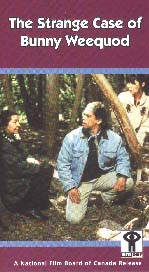|
________________
CM . . . .
Volume VII Number 5 . . . . November 3, 2000
As the title would suggest, the story begins with a mystery: why are all the fish dying in the lake?
Bunny Weequod, Ojibway fisherman, wants to know, and so like many sleuths, undertakes his
mission under cover of darkness. His boat capsizes, and he is presumed dead, but the next day,
Bunny reappears, albeit in slightly altered form. Now sporting a beard, Bunny is acting strangely:
he draws cryptic pictures on the wall of his bathroom, picks a fight with his friend Fred (who, in
cleaning the engine for his boat, discharges some oil into the lake, enraging Bunny), and steals a
can of tobacco from Esther, a local elder. Understandably, Bunny's wife is distressed by all of
these behaviors and seeks Esther's help and advice. Bunny's underwater transformation has been
the work of the little people of Ojibway tradition, and, in order to propitiate them, he must pay
them the respect they are due. The tobacco which he stole from Esther is one of the four sacred
traditional plants and must be offered up. Only then will harmony be restored. And so, can of
tobacco in hand, Bunny wades into the lake, returning later as his old self, yet changed.
Recommended with reservations.
Joanne Peters is a teacher-librarian at Kelvin High School in Winnipeg, MB.
To comment on this title or this review, send mail to cm@umanitoba.ca.
Copyright © the Manitoba Library Association.
Reproduction for personal use is permitted only if this copyright notice
is maintained. Any other reproduction is prohibited without
permission.
Published by
TABLE OF CONTENTS FOR THIS ISSUE - November 3, 2000.
AUTHORS |
TITLES |
MEDIA REVIEWS |
PROFILES |
BACK ISSUES |
SEARCH |
ORDER |
CMARCHIVE |
HOME
|
